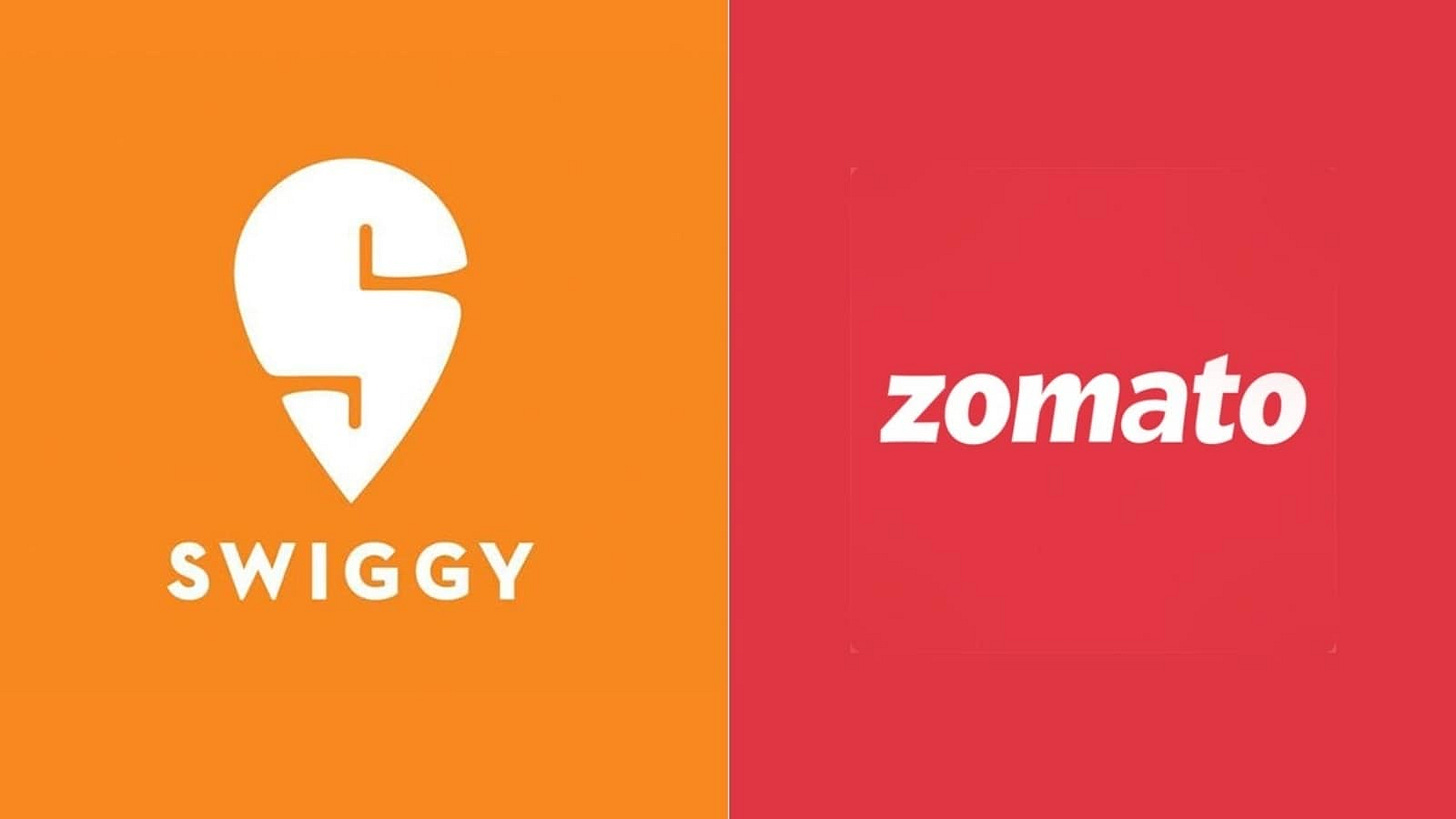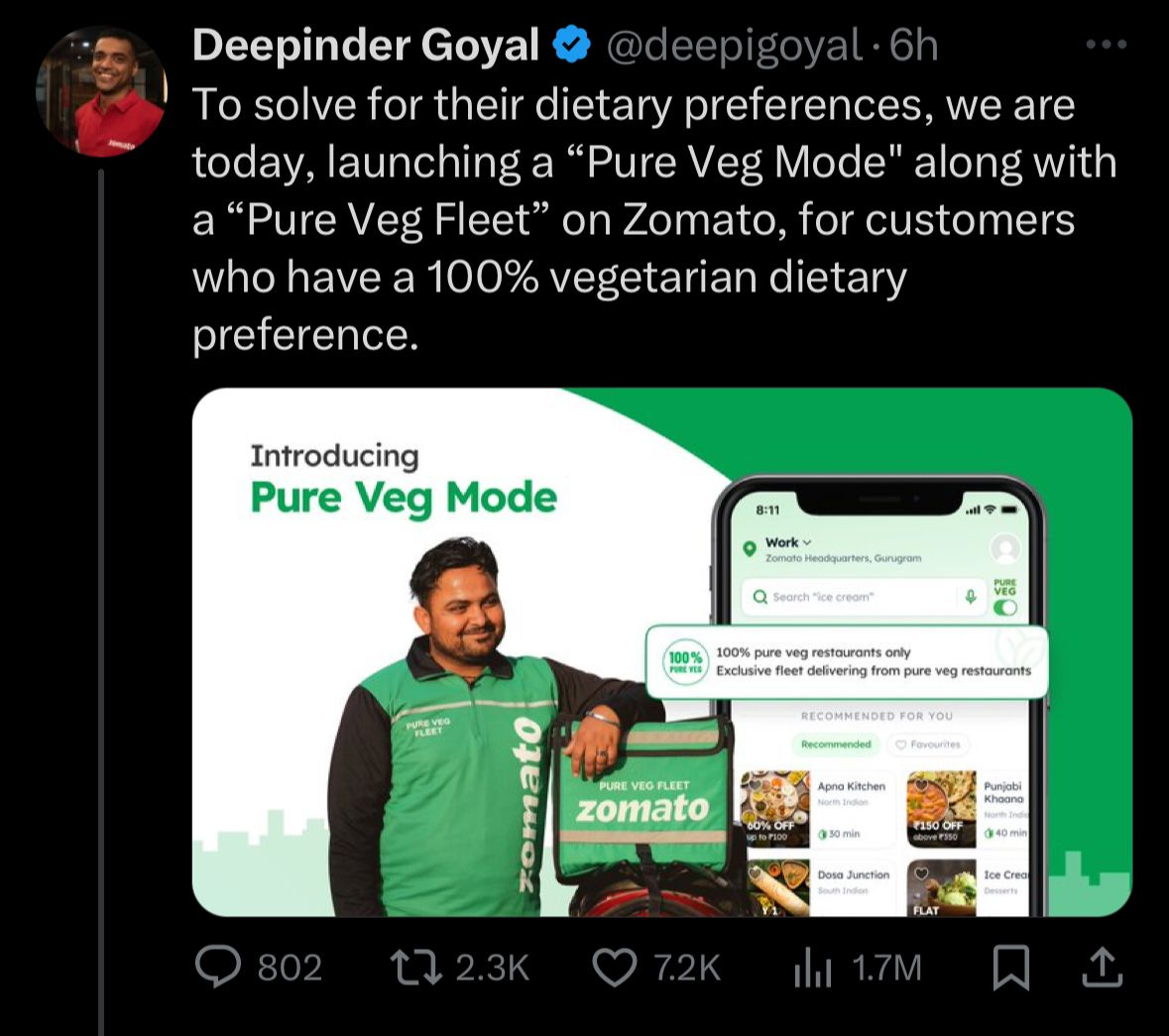Zomato and Swiggy: Visibly same but fundamentally different
About 18 years ago I was travelling with my family in Kolkata. Traveling was difficult then, specially with my grandmother because she was pure vegetarian and would eat only in restaurants which were 100% vegetarian. Find her amazing restaurants which served veg and non-veg in separate sections and she would say “Kitchen mai toh sab ek hi kadhai mai banta hoga” (everything must be getting cooked in the same utensils)
Finding a veg only restaurant in Kolkata then was super difficult, so difficult that I was just 9 years old then and I still remember how many restaurants we checked only to find everyone selling at least “Maach-bhaat”.
Something really interesting happened yesterday which reminded me of those days again. Zomato launched “Pure veg mode” along with “Pure veg fleet” for customers who have a 100% vegetarian dietary preference. Pure Veg Mode will consist of a curation of restaurants that serve only pure vegetarian food, and will exclude all restaurants which serve any non-veg food item.
From a business perspective, it makes sense considering that ~30% of Indians are pure vegetarians. These users might be reluctant to buy from Zomato because like my grandmother said “everything gets cooked in the same utensils” and now they would be willing to buy.
But then why has Swiggy not launched something similar?
Maybe they would launch, but why was Zomato able to think of it before them?
Answer lies in what these companies are. Not what they sell, but what they are.
What business are you in?
Theodore Levitt in his very popular article Marketing myopia, published in 1960, asked one of the most important questions for any business:
What business are you in?
Levitt’s argued that sustained growth of a business depends on how the business defines itself and how carefully it gauges customers’ needs. How you define the business is how your employees see it and accordingly business strategy is defined, he argued.
Today, 64 years later, Levitt’s ideas are as relevant as they were then. From a customer’s point of view, specially someone who is primarily using Zomato/ Swiggy for food delivery, both are the same. The UI/UX is different, but there is no difference in the two businesses.
But add Levitt’s lens and you realise how different the two businesses are.
Food company or Logistics company?
Quoting Levitt again:
An industry begins with the customer and his or her needs, not with a patent, a raw material, or a selling skill. Given the customer’s needs, the industry develops backwards, first concerning itself with the physical delivery of customer satisfactions. Then it moves back further to creating the things by which these satisfactions are in part achieved. How these materials are created is a matter of indifference to the customer, hence the particular form of manufacturing, processing, or what have you cannot be considered as a vital aspect of the industry. Finally, the industry moves back still further to finding the raw materials necessary for making its products.
Zomato started as in 2008 as FoodieBay, an aggregator of restaurant menus. Over the years, Zomato kept going deeper into solving the Food problems of their customers: First concerning itself with physical delivery of customer satisfactions (launched intracity food delivery, intercity food delivery- Zomato Legends). Then it moved back to find the raw materials necessary to deliver satisfactions: started supplying groceries to restaurants through HyperPure. Now, that the obvious opportunities have been exhausted, Zomato still keeps growing the share by launching new offerings like “Pure Veg mode”.
It acquired Blinkit but continues to run it separately while focusing on doing everything right with just one thing: Food.
Swiggy on the other hand followed a very different trajectory. They started with Food delivery and then went on to launch many more delivery services: Parcel delivery (Genie), Grocery delivery (Instamart), creative goods delivery (Minis), Meat delivery and then finally Anything delivery (Swiggy mall).
Their entire strategy (and products) revolve around one thing: Delivery
So while, Zomato defined Food as its territory, Swiggy found Logistics to be its answer.
Thus, when it comes to Food, Zomato would always be ahead, it would always be the innovator, it would always be the leader.







